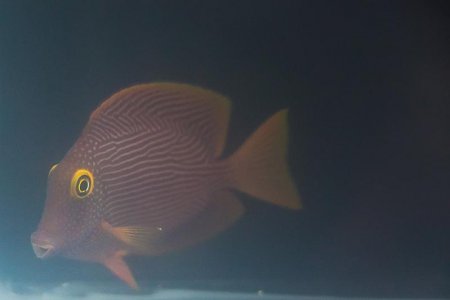appellativo
New member
Snorvich,
I am impressed that you are still contributing to this topic for such a long time. Kudos to you for helping grow this hobby and save some fish.
So I had a few fish in a QT for a couple of weeks with no signs of ich, but the notorious white spots showed up after they went into the DT. I'm pretty sure my DT is contaminated (as opposed to the fish) since I still have a couple more fish in the QT that have not gotten any parasites.
I've tried the hypo and copper methods before, but they always seem to fail. Hypo was too difficult in maintaining the proper salinity and it took forever. Copper just seemed to make things worse for the fish. So I'm glad that I stumbled across the TT method to try since it seems right up my alley.
I read up to page 11 on this thread, and kind of skipped some stuff but here's my plan:
Use two 5 gal buckets, pvc, air pumps, heater and perform the TT method for 12 days, transferring the fish in the morning on every fourth day. Then using a bleach solution (1 part per 20 was mentioned) to sterilize the equipment. Dry everything and repeat.
After the transfer period is over I put the fish into a longer term QT tank to watch for any other outbreak as well as give time for the ich to die out in my DT. So with the 12 days from transferring, I guess they would be living in the QT for a little over six weeks.
I need some advice on how to properly set up the QT for the post TT process. I was going to use a 20 gal tank, with a small skimmer. If I set up this QT now, it will not be cycled by the time the fish are ready to join in. My normal though would be to add some rocks/water/sand from the DT to start up the system, but I think that would counter productive to the TT system.
Should I use a HOB to add additional filtration to the system? How should I proceed?
I had the same problem as you. When I first started the TT method, I set up a fresh DT (in your case it will be a longer term QT but the method is the same: ammonia cycling).
I got a hold of some pure ammonia from a scientific chemical company. It was 35% strength and I had to do some math to dilute it down to a lower 10% percentage. Anyways, the point is, you have to get your hands on some pure ammonia (if you shake it, it should not foam or suds, and it should not have any color).
Set up your temp qt with a few powerheads and some surfaces for the bacteria to inhabit. Either fluval stone filter pieces (can't think of the name) or a couple inches of crushed coral will do. Mix saltwater and wait 24 hours for ph to stabilize. I am going to put a link you can look at for how to do the ammonia cycling method, below.
I was not successful like the guy says in finding the ammonia at the supermarket though. And he says it can take from two to four weeks. For me, not getting it done in the two week time frame was NOT an option, so I also used starter cultures of saltwater bacteria, namely, Start Smart Complete by TLC Products and Bio Spira (purple bottle, by Tetra). I think I used each at least twice, if not three times, at various times during the ammonia supplementation process. I just kept at it and when twelve days was over, the cycle was complete. I was VERY RELIEVED that all my obsessiveness and research and diligence paid off.
All fish have been in that same clean DT for a year with no ich outbreaks. no new fish have been put in there without having done tank transfer...of course coral has but only from tanks with no ich and I have not added any fish in a long time, or coral for that matter. I just let what I have in there grow. It is possible that a cyst could have gotten in on a coral frag on the rock but it didnt. Got some aptasia though, but I'd much rather have that
http://www.csupomona.edu/~jskoga/Aquariums/Ammonia.html
feel free to google multiple pages on cycling with ammonia. remember you cant have anything living, except bacteria, while you are cycling with ammonia, till its all done!

